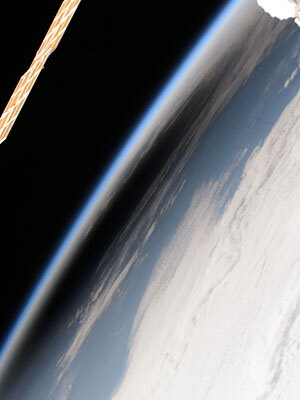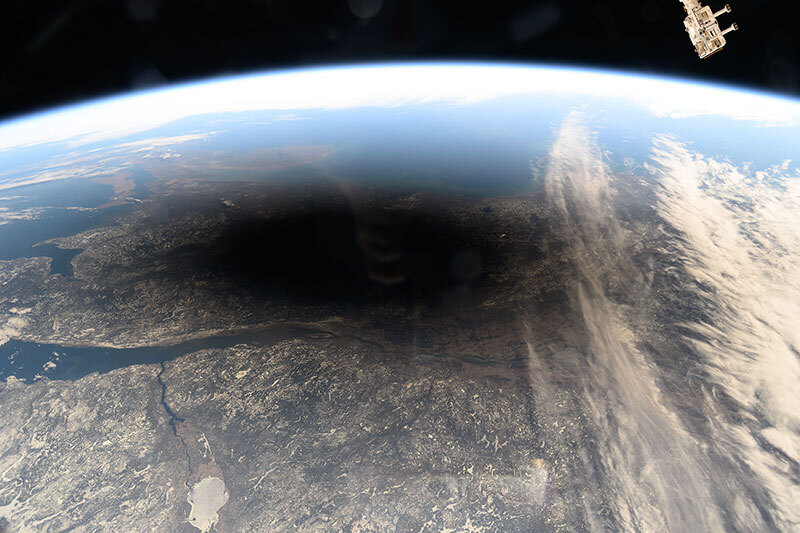10.04.2024

As bucket list items go, seeing a total solar eclipse from space might seem like a tall order.
Seeing one from Earth can be difficult enough. Just ask the millions of people in North America who not only traveled to be within the path of totality, but had to fortunate enough to have cloudless skies.
But on Monday (April 8), Michael Barratt became one of only 30 people in historyto see an eclipse from off the planet.
"I got a strange bucket list and this is one of the things that's on it, to actually watch an eclipse shadow cross the Earth from space. So I'm ecstatic to see this box gets checked and just to see this amazing thing from up here," said Barratt in a televised NASA interview.
Barratt and his six Expedition 71 crewmates — fellow NASA astronauts Jeanette Epps, Matthew Dominick and Tracy Caldwell Dyson, along with Roscosmos cosmonauts Oleg Kononenko, Nikolai Chub and Alexander Grebenkin — saw the eclipse from 260 miles high (420 kilometers) on the International Space Station.
What's more, they not only saw the moon pass in front of the Sun — as everyone (with clear skies) from Mexico to Canada and California to New York could see to varying degrees of totality — but also unique to being in space, had the view of the moon casting its shadow (its outer, lighter penumbra and central, darker umbra) on Earth below.
On the station's third pass around the planet while the moon was in alignment with the Sun, the crew was in a position to see a 94 percent partial eclipse. According to NASA, Dominick used a camera with a solar filter to capture the sight of the Sun and moon, while Epps and others peered out the Earth-facing windows to see the darkened parts of the northeast United States.
"I think we're very fortunate to be here at this special vantage point to see such a special event at this time," said Epps.
In addition to the astronauts' photos, video cameras mounted on the station's exterior provided live views of the shadow of the moon, which NASA shared on its television channel and streaming services.
As amazing and different a view as the station crew had, there were benefits to being on the ground, too, said Al Drew, a NASA astronaut who viewed Monday's eclipse from the Dallas Arbroretum and Botanical Gardens in Texas.
"One-hundred percent would have been even better," Drew, referencing full totality rather than 94 percent his colleagues' on the space station experienced, said in an interview with collectSPACE. "I got to see the entire nearly four minutes of totality on this eclipse. Even were they to go through [the path of] totality, it would be for seconds."
To remain in orbit, the space station travels at 17,500 miles per hour (28,165 kilometers per hour), such that their view out of the window is always changing.
Drew flew on two space shuttle missions to the station, but neither flight was during an eclipse. In 2013, after logging more than 25 days in space and becoming the 200th person to perform a spacewalk, Drew left active flight status for a management position at NASA.
"As much as I would love to see that shadow cross the Earth, I don't know if that was the best seat in the house," said Drew. "But I would love to have the opportunity to go see it one time."
For Barratt, the best eclipse may just be the next one.
"My first one was when I was 19 with a homemade telescope in the desert. I have seen a few since then, and during the 2017 eclipse, I was on a chartered aircraft several hundred miles off the coast of Oregon," he said. "Admittedly, I'm a bit of an eclipse junkie."

The moon's shadow, or umbra, is pictured covering portions of the Canadian provinces of Quebec and New Brunswick and the American state of Maine in the above and following photographs from the International Space Station as it soared into the solar eclipse from 261 miles above. (NASA)



Quelle: CS
